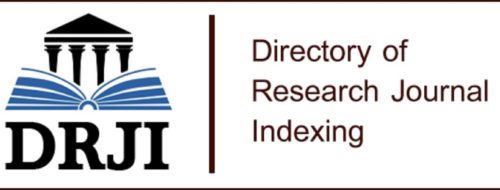FİNANSAL BİLGİ MANİPÜLASYONUNUN BENEİSH TR MODELİ İLE TESPİTİ ÜZERİNE BİR ARAŞTIRMA: BIST METAL SANAYİ SEKTÖRÜ ÖRNEĞİ
Öz
Şirketlerin mali durumlarını ve dolayısıyla finansal tablolarını olduğundan daha iyi göstermek amacıyla
yaptıkları değişiklikler, muhasebe veya finansal bilgi manipülasyonu olarak adlandırılır. Finansal bilgi
manipülasyonunu ortaya çıkarmak için bazı yöntemler geliştirilmiştir. Bu çalışmada, Beneish TR
Modeli kullanılarak, finansal tablolarda yapılan olası manipülasyonlar tespit edilmeye çalışılmıştır.
Bu amaçla hisse senetleri Borsa İstanbul (BİST)’te işlem gören ana metal sanayi sektör grubunda yer
alan 16 şirketin 2018, 2019, 2020, ve 2021 dönemleri finansal tabloları kullanılmış ve 2020 ile 2021
yılları için Beneish TR değerleri elde edilmiş ve yorumlanmıştır. Buna göre, 2020 yılında yalnızca bir
şirketin manipülasyon yapma ihtimali olduğu, 5 şirketin manipülasyon yaptığına dair ciddi kanıtlar
bulunduğu, 7 şirkette de manipülasyon yapıldığına dair çok önemli kanıtlar olduğu, 2021 yılı için
ise bir şirkette manipülasyona başvurulduğuna dair bir kanıt olmadığına, 2 şirketin manipülasyon
yapma ihtimali bulunduğu, 5 şirketin manipülasyon yaptığına dair ciddi kanıtlar olduğu ve 8 şirketin
manipülasyon yaptığına dair çok önemli kanıtları bulunduğu tespit edilmiştir
Anahtar Kelimeler
Finansal Manipülasyon Beneish modeli TR Beneish Modeli Borsa İstanbul Ana Metal Sanayi Sektörü
Kaynakça
- Abed, I. A., Hussin, N., Haddad, H., Almubaydeen, T. H., ve Ali, M. A. (2022). Creative accounting determination and financial reporting quality: The integration of transparency and disclosure. Journal of Open Innovation: Technology, Market, and Complexity, 8(1), 38, 1-23.
- Al-Hashimy, H. N. H. (2022). A review of accounting manipulation and detection: Technique and prevention methods. International Journal of Business and Management Invention, 11(10), 82-89. Altınbay, A. ve Ünal, O. (2022). Muhasebe manipülasyonu yöntemi olarak yaratıcı muhasebe. Ekonomi Maliye İşletme Dergisi, 5(1), 217-232.
- Balaciu, D., Bogdan, V., ve Vladu, A. B. (2009). A brief review of creative accounting literature and its consequences in practice. Annales Universitatis Apulensis,Series Oeconomica, 11(1), 170-183.
- Beneish, M. D. (1999). The detection of earnings manipulation. Financial Analysts Journal, 55(5), 24-36.
- Benligiray, S. ve Onay, A. (2021). Kazanç manipülasyonu tespit modellerinin Borsa İstanbul şirketlerinde test edilmesi. Muhasebe ve Denetime Bakış, 21(64), 179-204.
- Bezirci, M. ve Karahan, N. S. (2015). Muhasebe kayıt sürecindeki manipülasyonların neden ve sonuç ilişkisinin değerlendirilmesi. Sosyal Ekonomik Araştırmalar Dergisi, 15(29), 216-240.
- Blake, John. ve Gowthorpe, Catherine. 20 June 2005. Ethical Issues in Accounting Routledge. ISBN 1-134-69451-2. S.25 Erişim Linki: http://ndl.ethernet.edu.et/bitstream/123456789/24169/1/241.pdf.pdf Erişim Tarihi: Temmuz, 2023.
- Diana, B. ve Madalina, P. C. (2007). Is creative accounting a form of manipulation. Economic Science Series, Annals of the University of Oradea, 17(3), 935-940.
- Erdoğan, M. ve Erdoğan, E. O. (2020). Financial statement manipulation: a Beneish model application. Contemporary Issues in Audit Management and Forensic Accounting, Emerald Publishing Limited, 102, 173-188.
- Fidan, M. E. (2021). Finansal bilgi manipülasyonu ve beneish modeli: BIST taş ve toprağa dayalı sektör grubu şirketleri üzerine bir araştırma. Akademik Sosyal Araştırmalar Dergisi, 9(114), 1-28.
- Gao, P. ve Zhang, G. (2019). Accounting manipulation, peer pressure, and internal control. The Accounting Review, 94(1), 127-151.
- Healy, P. M. (1985). The effect of bonus schemes on accounting decisions. Journal of Accounting and Economics, 7, 1-3, 85-107.
- Jones, J. J. (1991). Earnings management during import relief investigations. Journal of Accounting Research, 29(2), 193-228.
- Kiraci, Ö. Ü., ve Çelikay, D. Ş. (2020). Büyük Temizlik Muhasebesi: Bist İmalat Sektöründe Bir Araştırma. Muhasebe ve Denetime Bakış, 20(61), 237-254.
- Küçükkocaoğlı, G. ve Küçüksözen, C. (2005). Gerçeğe aykırı finansal tabloların ortaya çıkarılması: İMKB şirketleri üzerine amprik bir çalışma. Muhasebe ve Finansman Dergisi, 28, 160-171.
- Küçükkocaoğlu, G., Benli, Y. K., ve Küçüksözen, C. (1997). Detecting the manipulation of financial information by using artificial neural network models. ISE Review, 9(36), 2-27.
- Küçüksözen, C. ve Küçükkocaoğlu, G. (2005). Finansal bilgi manipülasyonu: İMKB şirketleri üzerine ampirik bir çalışma. In Conference: 1st International Accounting Conference, 1-58.
- Öztürk, S. ve Yılmaz, C. (2019). Finansal sıkıntının muhasebe manipülasyonu ile ilişkisi: Bist gelişen şirketler piyasası'nda bir uygulama. Karadeniz Uluslararası Bilimsel Dergi, (41), 241-254.
- Remenarić, B., Kenfelja, I., ve Mijoč, I. (2018). Creative accounting-motives, techniques and possibilities of prevention. Ekonomski vjesnik, 31(1), 193-199.
- Repousis, S. (2016). Using Beneish model to detect corporate financial statement fraud in Greece. Journal of Financial Crime, 23(4), 1063-1073.
- Safta, I. L., Achim, M. V., ve Borlea, S. N. (2020). Manipulation of financial statements through the use of creative accounting. Case of Romanian companies, Studia Universitatis Vasile Goldiș Arad, Seria Științe Economice, 30(3), 90-107.
- Sakib, I. A. (2019). Detection of earnings manipulation practices in Bangladesh. International Journal of Management, Accounting and Economics, 6(8), 616-631.
- Shah, S. Z. A., Butt, S., ve Tariq, Y.B. (2011). Use or abuse of creative accounting techniques. International Journal of Trade, Economics and Finance, 2(6), 531-536.
- Shapiro, D. M. (2011). Better understanding accounting fraud. Journal of Corporate Accounting & Finance, 22(4), 61-64.
- Tepeli, Y. ve Kayıhan, B. (2016). Muhasebe manipülasyonunun Beneish modeli ile tespit edilmesi: Bist gıda maddeler sanayi sektörü’nde bir uygulama. Yönetim ve Ekonomi Araştırmaları Dergisi, 14(4), 145-264.
- Toplu, N., Calayoğlu, İ., ve Azaltun, M. (2021). Finansal bilgi manipülasyonu ortaya çıkarmaya yönelik bir araştırma (Beneish Model). Muhasebe ve Finans İncelemeleri Dergisi, 4(1), 16-25.
- Watts, R. L. ve Zimmerman, J. L. (1986). Positive accounting theory, Englewood Cliffs, NJ: Prentice-Hall
A RESEARCH ON THE DETECTION OF MANIPULATION OF FINANCIAL INFORMATION WITH THE BENEISH TR MODEL: AN EXAMPLE OF THE BIST METAL INDUSTRY SECTOR
Öz
Changes made by companies in order to show their financial situation and therefore their financial
statements better than they are, are called accounting or financial information manipulation. Some
methods have been developed to reveal manipulation of financial information In this study, possible
manipulations in the financial statements are tried to be determined by utilising the Beneish TR Model.
For this purpose, the financial statements for the periods 2018, 2019, 2020, and 2021 of 16 enterprises
in the main metal industry sector group whose shares are traded on Borsa Istanbul (BIST) are used,
and the Beneish TR values for the years 2020 and 2021 are obtained and interpreted. Accordingly, it
has been determined that only one firm has the possibility of manipulation in 2020, there is serious
evidence that 5 firms are manipulating, there exists very importat evidence that manipulation is being
performed in 7 firms, for the 2021, there is no evidence that manipulation is being applied in one firm,
2 firms have the possibility of manipulation, 5 firms have serious evidence that they are manipulating,
8 firms have very important evidence that they are manipulating.
Anahtar Kelimeler
Financial Manipulation Beneish model TR Beneish Model Borsa İstanbul Base Metal Industry Sector
Kaynakça
- Abed, I. A., Hussin, N., Haddad, H., Almubaydeen, T. H., ve Ali, M. A. (2022). Creative accounting determination and financial reporting quality: The integration of transparency and disclosure. Journal of Open Innovation: Technology, Market, and Complexity, 8(1), 38, 1-23.
- Al-Hashimy, H. N. H. (2022). A review of accounting manipulation and detection: Technique and prevention methods. International Journal of Business and Management Invention, 11(10), 82-89. Altınbay, A. ve Ünal, O. (2022). Muhasebe manipülasyonu yöntemi olarak yaratıcı muhasebe. Ekonomi Maliye İşletme Dergisi, 5(1), 217-232.
- Balaciu, D., Bogdan, V., ve Vladu, A. B. (2009). A brief review of creative accounting literature and its consequences in practice. Annales Universitatis Apulensis,Series Oeconomica, 11(1), 170-183.
- Beneish, M. D. (1999). The detection of earnings manipulation. Financial Analysts Journal, 55(5), 24-36.
- Benligiray, S. ve Onay, A. (2021). Kazanç manipülasyonu tespit modellerinin Borsa İstanbul şirketlerinde test edilmesi. Muhasebe ve Denetime Bakış, 21(64), 179-204.
- Bezirci, M. ve Karahan, N. S. (2015). Muhasebe kayıt sürecindeki manipülasyonların neden ve sonuç ilişkisinin değerlendirilmesi. Sosyal Ekonomik Araştırmalar Dergisi, 15(29), 216-240.
- Blake, John. ve Gowthorpe, Catherine. 20 June 2005. Ethical Issues in Accounting Routledge. ISBN 1-134-69451-2. S.25 Erişim Linki: http://ndl.ethernet.edu.et/bitstream/123456789/24169/1/241.pdf.pdf Erişim Tarihi: Temmuz, 2023.
- Diana, B. ve Madalina, P. C. (2007). Is creative accounting a form of manipulation. Economic Science Series, Annals of the University of Oradea, 17(3), 935-940.
- Erdoğan, M. ve Erdoğan, E. O. (2020). Financial statement manipulation: a Beneish model application. Contemporary Issues in Audit Management and Forensic Accounting, Emerald Publishing Limited, 102, 173-188.
- Fidan, M. E. (2021). Finansal bilgi manipülasyonu ve beneish modeli: BIST taş ve toprağa dayalı sektör grubu şirketleri üzerine bir araştırma. Akademik Sosyal Araştırmalar Dergisi, 9(114), 1-28.
- Gao, P. ve Zhang, G. (2019). Accounting manipulation, peer pressure, and internal control. The Accounting Review, 94(1), 127-151.
- Healy, P. M. (1985). The effect of bonus schemes on accounting decisions. Journal of Accounting and Economics, 7, 1-3, 85-107.
- Jones, J. J. (1991). Earnings management during import relief investigations. Journal of Accounting Research, 29(2), 193-228.
- Kiraci, Ö. Ü., ve Çelikay, D. Ş. (2020). Büyük Temizlik Muhasebesi: Bist İmalat Sektöründe Bir Araştırma. Muhasebe ve Denetime Bakış, 20(61), 237-254.
- Küçükkocaoğlı, G. ve Küçüksözen, C. (2005). Gerçeğe aykırı finansal tabloların ortaya çıkarılması: İMKB şirketleri üzerine amprik bir çalışma. Muhasebe ve Finansman Dergisi, 28, 160-171.
- Küçükkocaoğlu, G., Benli, Y. K., ve Küçüksözen, C. (1997). Detecting the manipulation of financial information by using artificial neural network models. ISE Review, 9(36), 2-27.
- Küçüksözen, C. ve Küçükkocaoğlu, G. (2005). Finansal bilgi manipülasyonu: İMKB şirketleri üzerine ampirik bir çalışma. In Conference: 1st International Accounting Conference, 1-58.
- Öztürk, S. ve Yılmaz, C. (2019). Finansal sıkıntının muhasebe manipülasyonu ile ilişkisi: Bist gelişen şirketler piyasası'nda bir uygulama. Karadeniz Uluslararası Bilimsel Dergi, (41), 241-254.
- Remenarić, B., Kenfelja, I., ve Mijoč, I. (2018). Creative accounting-motives, techniques and possibilities of prevention. Ekonomski vjesnik, 31(1), 193-199.
- Repousis, S. (2016). Using Beneish model to detect corporate financial statement fraud in Greece. Journal of Financial Crime, 23(4), 1063-1073.
- Safta, I. L., Achim, M. V., ve Borlea, S. N. (2020). Manipulation of financial statements through the use of creative accounting. Case of Romanian companies, Studia Universitatis Vasile Goldiș Arad, Seria Științe Economice, 30(3), 90-107.
- Sakib, I. A. (2019). Detection of earnings manipulation practices in Bangladesh. International Journal of Management, Accounting and Economics, 6(8), 616-631.
- Shah, S. Z. A., Butt, S., ve Tariq, Y.B. (2011). Use or abuse of creative accounting techniques. International Journal of Trade, Economics and Finance, 2(6), 531-536.
- Shapiro, D. M. (2011). Better understanding accounting fraud. Journal of Corporate Accounting & Finance, 22(4), 61-64.
- Tepeli, Y. ve Kayıhan, B. (2016). Muhasebe manipülasyonunun Beneish modeli ile tespit edilmesi: Bist gıda maddeler sanayi sektörü’nde bir uygulama. Yönetim ve Ekonomi Araştırmaları Dergisi, 14(4), 145-264.
- Toplu, N., Calayoğlu, İ., ve Azaltun, M. (2021). Finansal bilgi manipülasyonu ortaya çıkarmaya yönelik bir araştırma (Beneish Model). Muhasebe ve Finans İncelemeleri Dergisi, 4(1), 16-25.
- Watts, R. L. ve Zimmerman, J. L. (1986). Positive accounting theory, Englewood Cliffs, NJ: Prentice-Hall
Ayrıntılar
| Birincil Dil | Türkçe |
|---|---|
| Konular | Denetim ve Mali Sorumluluk |
| Bölüm | Makaleler |
| Yazarlar | |
| Erken Görünüm Tarihi | 30 Aralık 2023 |
| Yayımlanma Tarihi | 31 Aralık 2023 |
| Kabul Tarihi | 8 Eylül 2023 |
| Yayımlandığı Sayı | Yıl 2023 Sayı: 66 |













ERÜ İktisadi ve İdari Bilimler Fakültesi Dergisi 2021 | iibfdergi@erciyes.edu.tr
Bu eser Creative Commons Atıf-Gayri Ticari-Türetilemez 4.0 Uluslararası Lisansı ile lisanslanmıştır.



